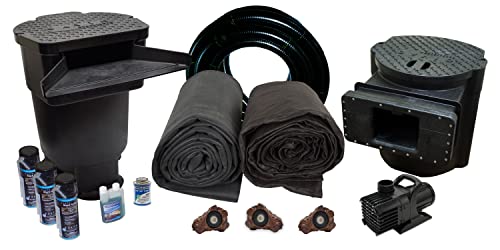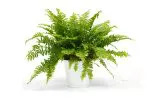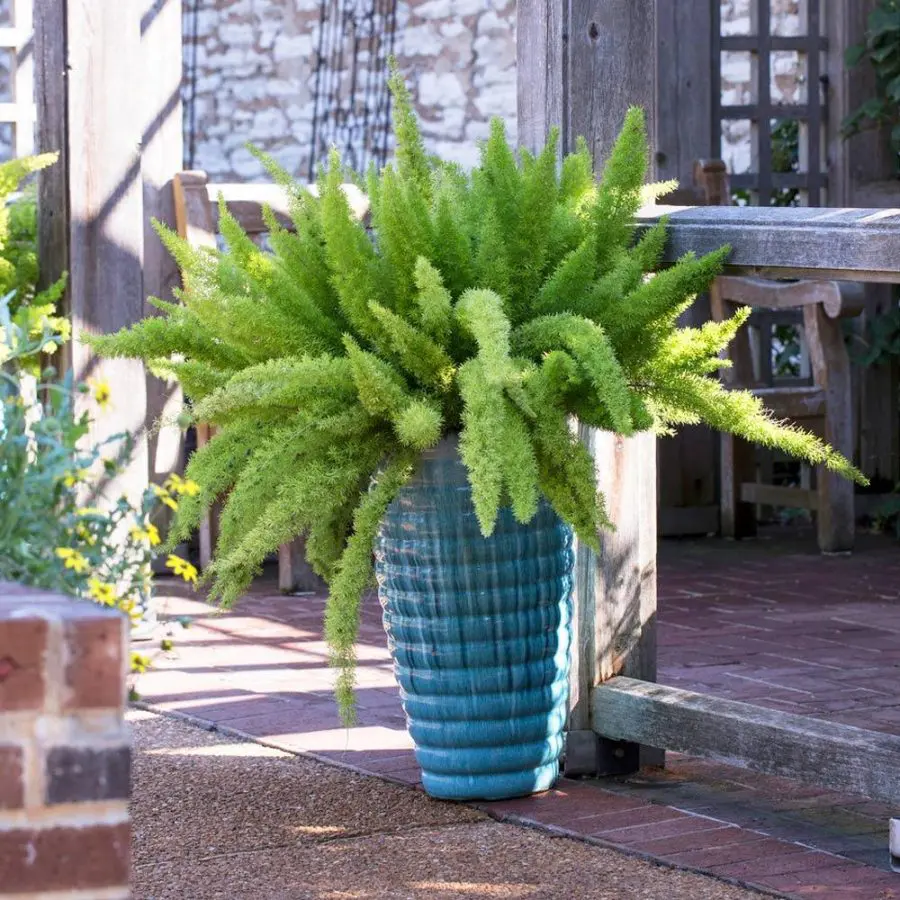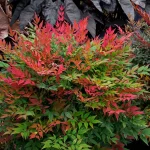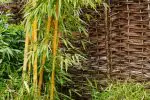This post contains affiliate links. If you buy something from one of our links we may earn a commission. Thanks

Learn how to add a garden pond to your next landscaping project with our easy-to-follow guide! From design to installation, we’ve got you covered.
Adding a garden pond to your backyard involves selecting a type among above-ground, in-ground, or natural ponds, marking the desired area, ensuring no utility lines are underneath, and then excavating the site.
Once dug, line the pond with a proper liner or install a pre-formed pond, fill it with water, set up any pumps or fountains, and decorate it with rocks, plants, and aquatic life to enhance the aesthetic appeal and create a serene environment.
Ready to take your backyard to the next level?
Consider adding a garden pond! Not only does it create a beautiful and serene atmosphere, but it also provides a habitat for aquatic plants and animals.
Don’t worry if you’re not sure where to start – we’ve got you covered with this easy-to-follow guide on how to add a garden pond to your outdoor space.
Get ready to create a peaceful oasis right in your own backyard!
How To Add A Garden Pond To Your Next Landscaping Project
If you’re looking to add some extra beauty and relaxation to your yard why not include a garden pond in your next landscaping project?
A garden pond can be a great way to add some interest to your landscape.
In this blog post, we will discuss the basics of including a garden pond in your next landscaping project.
We’ll talk about the different types of ponds that you can install, as well as the pros and cons of each option.
So if you’re thinking about including a garden pond in your next landscaping project, read on for more information!
Include A Garden Pond In Your Next Landscaping Project

You may be asking yourself should you include a garden pond in your next landscaping project?
For adding an immediate focal point to your backyard, think about installing a garden pond.
What better way to relax than sitting next to a water feature and listening to the sounds of running water?
Here are a few tips to help you build a perfect garden pond that will become the focal point of your garden.
Different Pond Types
Even before you learn how to add a garden pond comes the deciding what kind of water garden you will build and what shape it will take.
Garden ponds come in all shapes and sizes, so it’s important to decide what type of pond you would like before you start your project.
Will you just be building a small water garden with some plants and a few gold fish or will you be building a larger deeper pond for koi?
There are three main types of garden ponds:
1) Above-ground ponds
These are the most popular type of garden pond and are relatively easy to install.
They can be made from a variety of materials, including plastic, metal, or concrete.
Above-ground ponds are a great option if you’re looking for a low-maintenance pond.
2) In-ground ponds
In-ground ponds are more permanent than above-ground ponds and can be made from a variety of materials, including concrete, or a pond liner.
In-ground ponds typically require more work to install but can be a great addition to your landscaping.
3) Natural ponds
Natural ponds are created by damming a small section of a stream or river. They can be a beautiful addition to your landscape but require more maintenance than other types of garden ponds.
Most people will not be able to take advantage of this option but if you can go for it.
Pond Type Pros And Cons
Now that you know the different types of garden ponds, let’s talk about the pros and cons of each type.
Above-ground ponds are the most popular type of garden pond for a few reasons.
They’re relatively easy to install and can be made from a variety of materials.
Above-ground ponds are also a great option if you’re looking for a low-maintenance pond.
However, above-ground ponds can be less aesthetically pleasing than other types of garden ponds and may not last as long.
In-ground ponds are more permanent than above-ground ponds and can be made from a variety of materials.
In-ground ponds typically require more work to install but can be a great addition to your landscaping.
However, in-ground ponds can be difficult to repair if they spring a leak and may require professional help.
Natural ponds are created by damming a small section of a stream or river.
They can be a beautiful addition to your landscape but require more maintenance than other types of garden ponds.
Natural ponds also have the potential to flood if they’re not properly maintained.
Now that you know the pros and cons of each type of garden pond, you can decide which type is right for your next landscaping project.
• If you’re looking for a low-maintenance pond, an above-ground pond may be the best option.
• If you’re looking for a more permanent solution, an in-ground pond may be the better choice.
• And if you’re looking for a beautiful addition to your landscape, a natural pond may be the way to go.
Building Your Garden Pond

Whichever type of garden pond you choose, remember to do your research before you start your project.
Make sure you know what materials you need and how to properly install your pond.
With a little planning and preparation, you can have a beautiful garden pond that will add some extra beauty and relaxation to your yard!
Call Before You Dig
The first thing you should do is contact your municipality to ensure that there are no gas or electric lines running underneath the area you have chosen for your pond.
If you have a septic tank and drain field you will want to locate them too. You could build an above-ground pond over them in a pinch but if you need to access them in the future it could be problematic.
Try to stay clear of older trees that will have imposing root systems. Their roots may pierce your liner over time. Digging will be much harder too.
Choose a location that will be visible from most of the backyard for everyone’s pleasure.
On the other hand, you can hide it away in a corner and heavily landscape the pond so that it becomes a little private refuge.
Lay Out Your Pond Shape
Establish the shape of your pond with a rope. If you are employing a pre-formed pond the options will be limited.
However, if you are working with a liner, you are only limited by your imagination.
It should be noted that an irregular shape will use more pond liner and may be harder to eliminate dead spots without using extra pumps or aerators.
When you start digging, remember to leave a step for a plant shelf so you have an easy place for plant liners.
They will be determined by the design of your pre-formed pond if you are using one.
You should now make sure that your pond’s edges are level.
If your power source is not close to the pond, you should dig a shallow trench in which you will lay the PVC pipe that will hold the electric cord.
Get An Easy Start With A Koi Pond Kit
Buying a pond kit is a great way to save time and money over buying everything separately.
You also will not be running back to the home improvement store because you forgot something.
Probably the biggest advantage of using a pond kit is that it has been pre-engineered by pond experts.
So your new pond will work right for your pond size without any guesswork
Savio makes great pond stuff. I use their skimmer and waterfall in my pond. This kit is good for 1000-1800 gallon koi fish ponds. More sizes are available on Amazon.
Adding The Liner Or Pre-Formed Pond
If using a pre-formed pond fill the base of the water feature with one inch of sand. Also pour sand on the terraced steps. You can now place your pre-formed pond in the hole.
If working with a liner, begin laying it down. Cutting four feet longer and wider than the actual water feature will help. Smooth out any creases by pushing the liner down.
Filling The Pond
You can now begin to fill the pond. As the water feature fills, backfill the empty space around your pre-formed pond and try to time it so that you are done at about the same time the pond is filled.
When using a liner, continuously pull the liner taught all around. If you are utilizing a pump to operate a fountain or waterfall, place it at the bottom of the pond and bury the cord.
Start Decorating Your Pond
Now comes the fun part – decorating up your pond. Arrange flat rocks along the edge of your pond and include a second layer in an offset pattern. Overhang the rocks a little over the water.
Lay the cord for your pump in between rocks and camouflage it with another flat rock.
Landscaping Your Water Feature
Landscaping around your water feature should not be rushed. Is your goal to have the pond fit with the rest of the garden or do you want it to be very visible?
You should maintain at least one side clear of vegetation to keep it accessible. Designing a feature on one side and one end while leaving the rest of the pond clear is a popular landscaping option.
When choosing plants, remember to select ones that will do well in a moist environment and to take your region’s climate into consideration.
Garden Pond FAQs
Installing a garden pond often brings about a myriad of questions, especially for those embarking on this endeavor for the first time.
Below are some common inquiries and responses to provide clarity on this landscaping project:
Q. What are the main types of garden ponds?
A. The main types are above-ground ponds, which are easy to install and low-maintenance; in-ground ponds, offering a permanent solution with more installation work; and natural ponds, created by damming a section of a stream or river, requiring more maintenance but adding a beautiful, natural touch to your landscape.
Q. How do I choose the location for my garden pond?
A. Select a location visible from most of the backyard for enjoyment, away from older trees to avoid root interference, and ensure there are no utility lines or septic systems underneath the chosen area.
Checking with your municipality before digging is advisable to avoid any utility conflicts.
Q. What materials will I need for constructing a garden pond?
A. Key materials include a pond liner or a pre-formed pond, sand for base leveling, a pump for water circulation if desired, rocks and plants for decoration, and possibly a pond kit that contains pre-engineered essentials for creating a pond, saving time and ensuring a well-coordinated setup.
Q. How do I maintain my garden pond once it’s set up?
A. Maintenance involves regular cleaning to remove debris, checking the water levels, ensuring the pump and other installations are working correctly, monitoring for any leaks, and looking after the aquatic life and plants within the pond. Over time, seasonal care like protecting the pond from frost in winters is also essential.
Include A Garden Pond In Your Next Landscaping Project Final Thoughts
Now is the moment to enjoy your hard work. In many cases, smaller water features may be weekend affairs. So go do it.
Everyone will want a garden pond when they see how good yours looks.
Read more: Water Gardening for Beginners: 11 Tips For Successful Water Gardens

